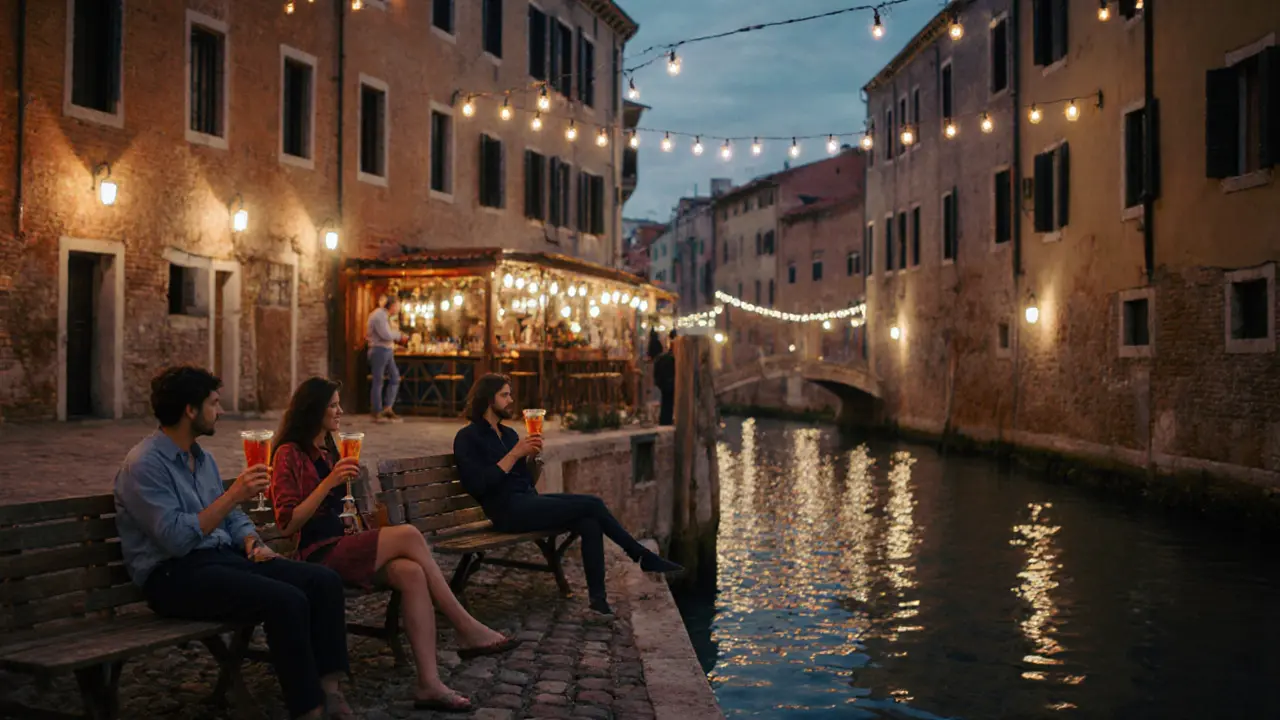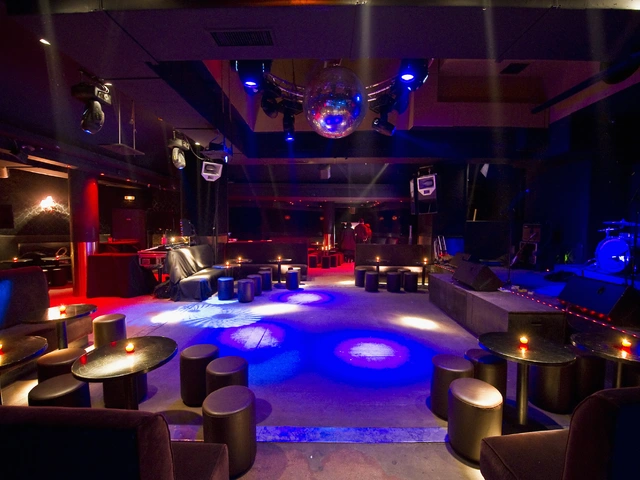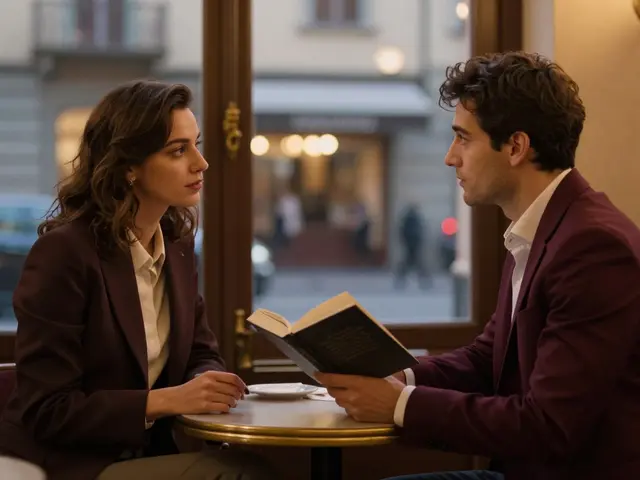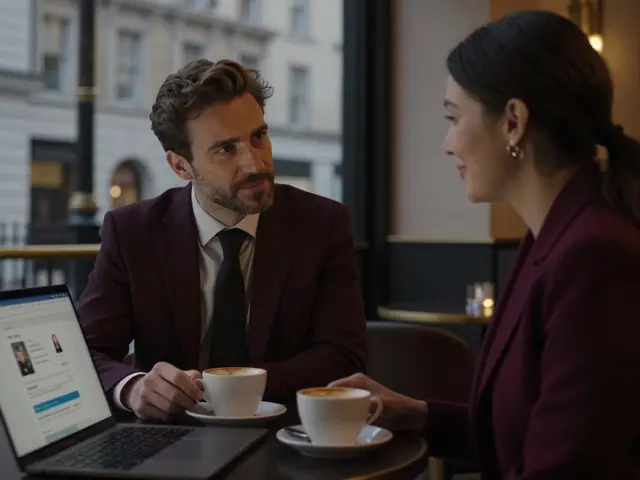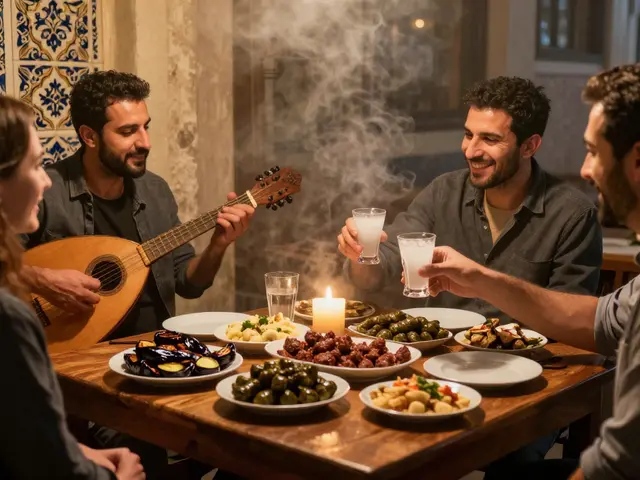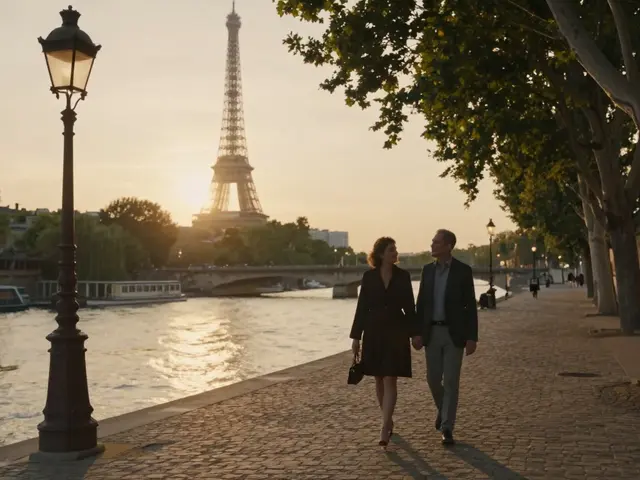When the sun sets in Milan, the city doesn’t sleep-it transforms. The streets of Brera, Navigli, and Porta Romana come alive with music, laughter, and the clink of glasses. This isn’t just a party scene. It’s a cultural rhythm, shaped by designers, artists, and locals who know how to turn an evening into something unforgettable. Whether you want to dance until dawn in a warehouse-turned-club or sip craft cocktails under string lights, Milan delivers. Here’s where to go, what to expect, and how to make the most of it.
Where the Locals Go: Navigli District
Start your night in Navigli. This canal-lined neighborhood feels like a secret the city kept for years. By day, it’s full of antique shops and brunch spots. By night, it becomes a maze of outdoor bars with live jazz, indie bands, and people lounging on wooden benches with Aperol Spritzes. The vibe is relaxed but electric.
Don’t miss Bar Basso, the birthplace of the Negroni Sbagliato. It’s small, unassuming, and packed with locals who’ve been coming since the 1980s. Order the signature drink, sit at the counter, and watch the bartender work with quiet precision. If you want something louder, head to La Bicocca or Bar del Fico. Both have outdoor terraces, great wine lists, and a crowd that’s more interested in conversation than Instagram posing.
Clubbing at the Highest Level: Porta Venezia and the West
If you’re looking for world-class clubs, head to Porta Venezia. This area is where Milan’s electronic music scene thrives. The most famous spot? Clubs 2001. It’s not flashy. No velvet ropes, no VIP sections. Just a massive industrial space, a killer sound system, and DJs who play everything from deep house to techno. The crowd? Mostly locals in black turtlenecks and vintage denim. You’ll know you’re in the right place when the bass hits and everyone moves as one.
For something more experimental, try La Scala Club-not to be confused with the opera house. This underground venue hosts avant-garde sets, live visuals, and artists from Berlin and Tokyo. Doors open late (1 AM), and the energy builds slowly. By 3 AM, it’s packed, sweaty, and utterly hypnotic. Bring cash. Credit cards aren’t always accepted.
Just outside the city center, La Baita is a seasonal spot that turns into a forest-themed club in summer. Think wooden decks, fire pits, and DJs spinning under the stars. It’s a 20-minute ride from the center, but worth it. The shuttle bus runs until 3 AM.
Lounges That Feel Like Private Parties
Not everyone wants to dance. Some nights call for quiet elegance. That’s where Milan’s lounges shine. In Brera, Bar Basso already made the list-but don’t overlook Le Jardin. Hidden behind a bookshop, this rooftop lounge has velvet couches, low lighting, and cocktails made with Italian herbs and aged spirits. The music is ambient jazz. No shouting. No flashing lights. Just good conversation and perfect martinis.
For a more glamorous vibe, head to Terrazza Triennale on the top floor of the Triennale Design Museum. The view of the city skyline is unbeatable. They serve gin tonics with edible flowers and small plates of truffle crostini. It’s expensive-around €25 per drink-but it’s one of the few places where you can feel like a Milanese aristocrat without wearing a tuxedo.

What to Wear: Dress Code Reality Check
Milan doesn’t have strict dress codes like Paris or London-but it does have standards. No sneakers. No hoodies. No flip-flops. Even in summer, most clubs expect smart casual. Think dark jeans, a fitted shirt, and leather shoes. Women often wear dresses or tailored pants. You don’t need to look like a runway model, but you do need to look intentional.
Some high-end lounges and clubs (like Le Jardin or Bar Basso) will turn you away if you’re in athletic wear. Others, like Clubs 2001, are more relaxed-but even there, ripped jeans and tank tops stand out for the wrong reasons. When in doubt, dress like you’re going to a gallery opening, not a concert.
When to Go: Timing Matters
Milan doesn’t party like Ibiza or Berlin. The rhythm is slower. Dinner starts at 9 PM. Drinks begin at 11. Clubs don’t fill up until after midnight. If you show up at 10 PM, you’ll be one of the first. By 1 AM, the real crowd arrives. Most clubs close at 4 AM, but some (like La Baita in summer) stay open until 6 AM.
Weekends are packed. Friday and Saturday nights require reservations for lounges and long lines at clubs. If you want a better experience, go on a Thursday. The crowd is smaller, the music is better, and the bartenders have more time to talk. Many locals treat Thursday as their real night out.
How to Get In: Bouncer Secrets
Getting into Milan’s best spots isn’t about who you know-it’s about how you show up. Bouncers here are sharp. They notice everything: your shoes, your posture, your group size. Arrive in a group of 3-5. Too many people? You’ll get turned away. Too few? You might look like a tourist.
Don’t try to bribe. Don’t flash cash. Don’t argue. If you’re turned away, walk away calmly. Try another place. The city has dozens of options. The best clubs don’t need to be crowded to be good. In fact, some of the most memorable nights happen in places that feel like hidden gems.

What to Drink: Beyond the Aperol Spritz
Yes, the Aperol Spritz is everywhere. But Milan’s cocktail scene has evolved. Look for bars that make their own syrups, infuse their own spirits, and use local ingredients. Try a Strega Sour-it’s made with a bitter herbal liqueur from southern Italy. Or a Negroni Sbagliato, which swaps gin for prosecco. It’s lighter, bubbly, and perfect for early evening.
For whiskey lovers, Bar Basso has a small but excellent selection of Italian and Scottish single malts. Le Jardin offers a tasting flight of three amari (bitter liqueurs) with a small plate of aged cheese. It’s not just a drink. It’s an experience.
What to Avoid
Stay away from tourist traps near the Duomo. Places like Bar Campari or La Perla are overpriced, loud, and full of people who’ve never been to Milan before. You’ll pay €18 for a drink that tastes like syrup.
Also avoid clubs that advertise “VIP tables” on Instagram. These are often fake. The real VIP areas are quiet, unmarked, and reserved for regulars. If a club is pushing “exclusive access,” it’s probably not worth it.
Final Tip: The Milanese Way
The secret to a great night out in Milan isn’t finding the biggest club. It’s moving slowly. Start with a drink in Navigli. Move to a lounge for conversation. Then, if the mood hits, head to a club. Don’t rush. Don’t check your phone. Let the night unfold. That’s how the locals do it.
And when you leave at 5 AM, walking past the empty canals, the quiet streets, the still-lit windows-you’ll understand why Milan’s nightlife isn’t just about partying. It’s about being present.
What’s the best night to go out in Milan?
Thursday nights are the best for a real Milanese experience. Clubs are less crowded, DJs play more curated sets, and the atmosphere feels more authentic. Friday and Saturday are packed with tourists, so if you want to avoid lines and noise, go midweek.
Do I need to make reservations for clubs in Milan?
Most clubs don’t take reservations-they operate on a first-come, first-served basis. But lounges like Le Jardin and Terrazza Triennale do. Book at least a day ahead, especially on weekends. For clubs like Clubs 2001, showing up before midnight gives you the best chance of getting in without waiting.
Is Milan nightlife safe at night?
Yes, Milan is one of the safest major European cities for nightlife. Stick to well-lit areas like Navigli, Brera, and Porta Venezia. Avoid walking alone in empty industrial zones after 2 AM. Use the metro-it runs until 1:30 AM on weekends, and taxis are cheap and reliable.
How much should I budget for a night out in Milan?
You can have a great night for €50-80. That includes 2-3 cocktails (€12-18 each), a few small plates, and a club entry fee (€10-15). If you’re going to a high-end lounge or ordering premium drinks, budget €100-150. Skip the tourist bars-they charge double for the same drink.
Are there any age restrictions for clubs in Milan?
Most clubs require you to be 18 or older. Some upscale venues, especially those serving alcohol late at night, enforce a 21+ rule. Always carry ID. Bouncers check it often, even if you look older. No ID, no entry-no exceptions.
